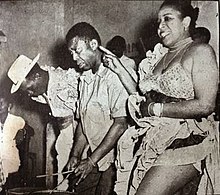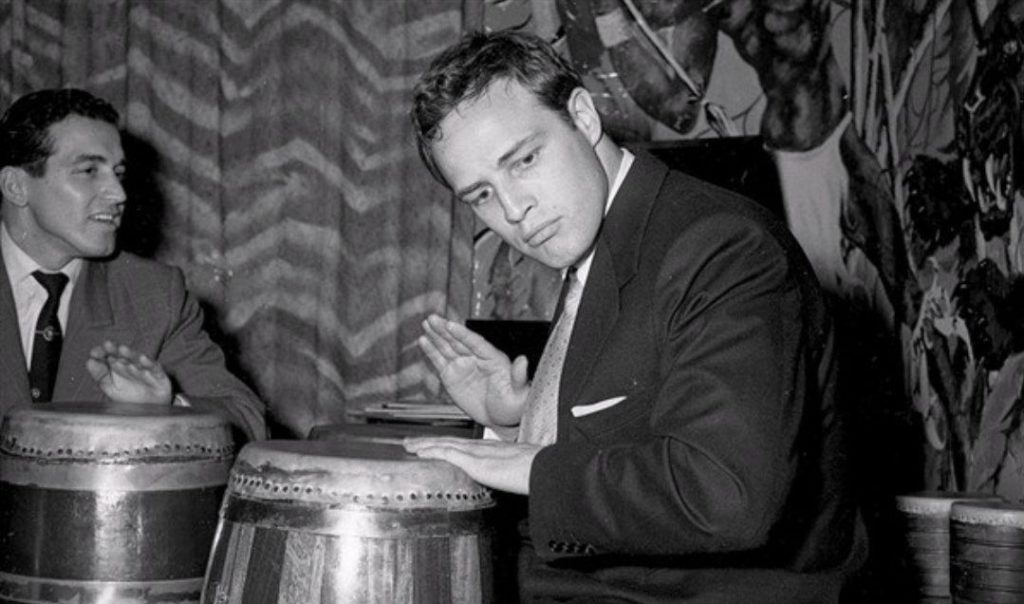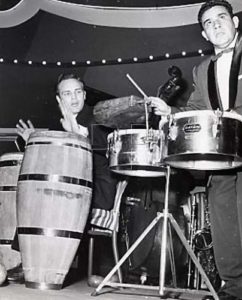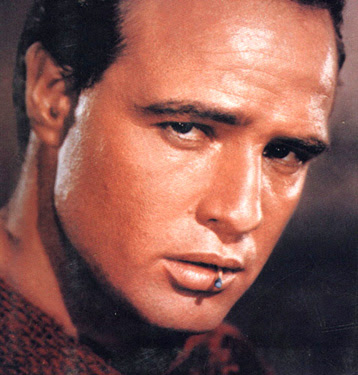 CUBAN MEMORIES: WHEN MARLON BRANDO WENT TO HAVANA
CUBAN MEMORIES: WHEN MARLON BRANDO WENT TO HAVANA
Marlon Brando baffled those who treated him. Idol of the crowds, he seemed however to be overwhelmed by his name and tired of fame. He was not reluctant to confess his desire to leave the cinema so, free from the looks and opinions of others, to live his own life. He felt too much scrutinized by people who kept track of the few romances that were known to him and the warm enthusiasm he showed for his partners. One day he felt so bewildered that he ran to hide in his psychoanalyst’s house. After all, he was not guilty of being demanded more than he wanted to give, like the time film director Elia Kazan asked him to visit Tennessee Williams. The famous playwright was dazzled by the good looks of the boy and took less than a minute to offer him the lead in ‘A streetcar called Desire’.
They say that that visit was the result of a bet. Marlon Brando shared with friends in a Miami cabaret when one of the group talked about Cuban music, danzón, bolero, the new chachachá and Afro music with their tumbadoras, bongoes, donkey jaws.
“I would be happy to go to Havana right now,” exclaimed the famous actor from Nido de ratas and A Streetcar Named Desire, who had listened to the recount ecstatically. He wore cowboy pants, tennis shoes and an open sports shirt.
– Why do not you do it like you’re dressed? Someone asked.
-Any things?
-Whatever you want…
-Well … I’m going to Havana.
With that informal wardrobe, Brando went to the airport to meet in the waiting room with Gary Cooper who, dressed impeccably, was like the back of the medal. The award-winning interpreter of Sergeant York would also travel to the Cuban capital. At the Havana air terminal, the journalist Alfredo Guas would interview them for the airport’s radio station.
“I’m coming to visit my friend, the novelist Ernest Hemingway,” Cooper declared.
Brando expressed for his part:
-I come to see the rumba dance. To practice the touch of the tumbadoras and to buy me a pair of bongos.
I was going to make a long-cherished dream come true. Since his days as a student at Actor Studio, and maybe before, he had a fondness for Afro-Cuban music, and it was not unusual for him to go to the Palladium, on Broadway, to dance to the rhythms of the Island. Not a few of those who They came back from Havana, dazzled by the drums they could hear in the almost marginal “fritas” of Marianao, those small, rustic nightclubs that lined the two roundabouts of Fifth Avenue, from Rumba Palace to El Niche ; Paradoxically, it faces the Coney Island and the Habana Yacht Club, the most exclusive recreational facility in the capital. He was dying, above all, to meet and listen to Silvano Shueg, the percussionist from Santiago, better known as Chori, and who was capable of extracting music from the most unexpected objects.
Trying to stay in the shade, Brando sought accommodation in Havana in a third-row hotel where he registered as Mr. Baker. It was February 19, 1956. He did not hesitate to contact Clemente “Sungo” Carrera, a Cuban baseball player who played in the Major Leagues. That same night they would go to the Sans Souci cabaret, on the road to Arroyo Arenas. Brando wanted to greet the actress and singer Dorothy Dandridge, the star of the show that the nightclub had on stage, and in the process of exploring if anyone knew of some bongo for sale. A bongo and “healed” by a good Cuban musician.
The bongosero of the orchestra did not want to sell his, and there was nothing for sale, that was known. Brando was not interested in any of the instruments that the members of the orchestra tried to put in his eyes. But the coming and going of the musicians to that table, caught the attention of the photographer of the cabaret, who did not delay in identifying the actor and start to shoot him with flashazos. The intrusion upset the artist; there were strong words and the occasional punch, while Dorothy tried to calm things down from the floor and Sungo took his outraged friend out of the establishment.
Nor was Brando lucky at Tropicana, but there Armando Romeu, director of the installation’s orchestra, informed him that his friend Armesto Murgada had some very good bongos, although he did not know if he would sell them.
Brando and Sungo visited Murgada. The actor stroked the instrument. That was exactly what he was looking for, so he took out a checkbook from his pocket, wrote “The Bearer” in one of them and passed it to Murgada for him to put the number. Murgada rejected it. Selling that instrument was like betraying the friend who had given it to him. A man who had also died (Chano Pozo), murdered in New York, in 1948. Insisted Sungo to do the business, but no way. They drank a few cocktails and, a while in English and another time in Spanish, they talked about music, while the actor was content to caress a bongo that would never be his. But that night, Murgada would accompany Marlon Brando to the “fritas” and introduce him to Silvano Shueg, “Chori,” the man who, with the chalk and baroque handwriting, wrote his name on any wall until the end of his life. it seemed opportune.
Germinal Barral, that indefatigable journalist of the magazine Bohemia who used the pseudonym Don Galaor, coincided with Brando one of those nights in the cabaret Sierra, on the Calzada de Concha. The actor had asked Sungo to take him to places where real Cuban music was played and danced, and there were no photographers, and his host also took him to Ali Bar, in the neighborhood of Lawton, a small nightclub that, like the aforementioned Sierra, mounted shows that today would like our most famous and glittering cabarets. In them, the visitor spent it at ease, despite the presence of Charlie Seiglie, who worked for Bohemia and accompanied Don Galaor and who was able to capture it while basking in the resounding anatomy of the rumba Esmeralda Reyes, and then, when a chachachá’s rhythm, he stepped on foot with Anisia, Rolando’s dance partner.
In the “fritas”, Brando, Sungo and Murgada made a tour so that the North American was impregnated with the environment. They were in the cabarets ‘Pensilvania’, ‘Pompilio’, ‘Tres Hermanos’ and ‘Mi Ranchito’, which masked a brothel, and around midnight they arrived at ‘El Niche’, which was, in those days, the Chori estate. . Brando wanted to rent the club for the remainder of the day and, provided they did not accept more customers, offered $ 5,000 to its owner, who accepted them delightedly. But Chori did not like anything that Cala asked for a download with the actor. He said he knew those drunken tourists who just wanted to be funny. Insisted the photographer-bongosero and, without another alternative, Chori took a bongo for him, passed another to Brando and brought a tumbadora to Murgada. That was the end. Chori was excited to find that the famous American had blood for Afro-Cuban music. Each one tried their best to demonstrate their skill, improvisation and ingenuity, said those who followed that spectacular discharge that was only interrupted when their musicians, one by one, stopped to take a long drink of rum between their chests and backs. . They played until dawn when only the owner and two employees were left in ‘El Niche’. Brando won the bet: he returned to Miami with the same clothes he came with.
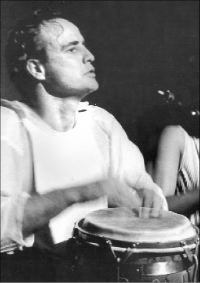 RECUERDOS CUBANOS: CUANDO MARLON BRANDO ESTUVO EN LA HABANA
RECUERDOS CUBANOS: CUANDO MARLON BRANDO ESTUVO EN LA HABANA
Marlon Brando desconcertaba a los que lo trataban. Ídolo de las multitudes, parecía sin embargo vivir agobiado por su nombre y cansado de la fama. No era remiso a confesar sus ganas de abandonar el cine para, libre de miradas y opiniones ajenas, vivir su propia vida. Se sentía demasiado escrutado por gente que llevaba la cuenta de los pocos romances que se le conocían y el tibio entusiasmo que mostraba por sus parejas. Un día se sintió tan desconcertado que corrió a esconderse en casa de su psicoanalista. Después de todo, él no era culpable de que le exigieran más de lo que quería dar, como aquella vez que el director cinematográfico Elia Kazan le pidió que visitara a Tennessee Williams. El afamado dramaturgo se deslumbró con la buena pinta del muchacho y demoró menos de un minuto en ofrecerle el protagónico en ‘Un tranvía llamado Deseo’.
Dicen que aquella visita fue consecuencia de una apuesta. Marlon Brando compartía con amigos en un cabaret de Miami cuando uno de los del grupo se explayó sobre la música cubana, el danzón, el bolero, el novedoso chachachá y de la música afro con sus tumbadoras, bongoes, quijadas de burro.
—Con gusto me iría ahora mismo a La Habana —exclamó el famoso actor de Nido de ratas y Un tranvía llamado Deseo, que había escuchado extasiado el recuento. Vestía pantalones de vaquero, zapatos tipo tenis y abierta camisa deportiva.
—¿Por qué no lo haces así como estás vestido? —inquirió alguien.
—¿Apuestas algo?
—Lo que quieras…
—Pues… a La Habana me voy.
Con aquel vestuario informal, Brando se fue al aeropuerto para coincidir en la sala de espera con Gary Cooper que, vestido de manera impecable, era como el reverso de la medalla. También viajaría a la capital cubana el laureado intérprete de El sargento York. En la terminal aérea habanera los entrevistaría el periodista Alfredo Guas para la emisora radial del aeropuerto.
—Vengo a visitar a mi amigo, el novelista Ernest Hemingway —declaró Cooper.
Brando expresó por su parte:
—Vengo a ver bailar la rumba. A practicar el toque de las tumbadoras y a comprarme un par de bongós.
Iba a hacer realidad un sueño largamente acariciado. Desde sus días de estudiante en Actor Studio, y tal vez desde antes, sentía afición por la música afrocubana, y no era raro que acudiera al Palladium, en Broadway, a bailar al compás de ritmos llegados de la Isla. No pocos de los que volvían de La Habana lo hacían deslumbrados por los tambores que les fue dable escuchar en las casi marginales «fritas» de Marianao, aquellos pequeños y rústicos centros nocturnos que se alineaban entre las dos rotondas de la Quinta Avenida, desde el Rumba Palace a El Niche; paradójicamente frente por frente al Coney Island y al Habana Yacht Club, la instalación recreativa más exclusiva de la capital. Se moría, sobre todo, por conocer y escuchar a Silvano Shueg, el percusionista santiaguero, más conocido como Chori, y que era capaz de sacarle música a los objetos más insospechados.
Tratando de mantenerse en la sombra, Brando buscó alojamiento en La Habana en un hotel de tercera fila en el que se registró como Mr. Baker. Era el 19 de febrero de 1956. No demoró en ponerse en contacto con Clemente «Sungo» Carrera, un pelotero cubano que jugaba en las Grandes Ligas. Esa misma noche irían al cabaret Sans Souci, en la carretera de Arroyo Arenas. Brando quería saludar a la actriz y cantante Dorothy Dandridge, la estrella del show que el centro nocturno tenía en escena, y de paso explorar si alguien conocía de algún bongó en venta. Un bongó ya «curado» por un buen músico cubano.
El bongosero de la orquesta no quiso vender el suyo, y no había nada en venta, que se supiera. Brando no se interesó por ninguno de los instrumentos que los integrantes de la orquesta trataron de meterle por los ojos. Pero el ir y venir de los músicos hasta aquella mesa, llamó la atención del fotógrafo del cabaret, que no demoró en identificar al actor y comenzar a acribillarlo a flashazos. La intrusión sacó de quicio al artista; hubo palabras fuertes y algún que otro puñetazo, mientras que Dorothy trataba de calmar los ánimos desde la pista y Sungo sacaba del establecimiento a su indignado amigo.
Tampoco tuvo suerte Brando en Tropicana, pero allí el maestro Armando Romeu, director de la orquesta de la instalación, le informó que su amigo Armesto Murgada tenía unos bongos muy buenos, aunque desconocía si los vendería.
Brando y Sungo visitaron a Murgada. El actor acarició el instrumento. Aquello era precisamente lo que buscaba, de manera que sacó del bolsillo una libreta de cheques, escribió «Al Portador» en uno de ellos y lo pasó a Murgada para que él pusiera la cifra. Murgada lo rechazó. Vender aquel instrumento era como traicionar al amigo que se lo había regalado. Un hombre que además había muerto (Chano Pozo), asesinado en Nueva York, en 1948. Insistió Sungo para que hiciera el negocio, pero ni modo. Bebieron unos cuantos cocteles y, un rato en inglés y otro rato en español, hablaron de música, mientras que el actor se contentaba con acariciar un bongó que nunca sería suyo. Pero eso sí, esa noche Murgada acompañaría a Marlon Brando a las «fritas» y le presentaría a Silvano Shueg, «Chori», el hombre que hasta el final de su vida, con tiza y letra barroca, escribía su nombre en cualquier pared que le pareciera oportuna.
Germinal Barral, aquel infatigable periodista de la revista Bohemia que utilizaba el seudónimo de Don Galaor, coincidió con Brando una de esas noches en el cabaret Sierra, en la Calzada de Concha. El actor había pedido a Sungo que lo llevase a lugares donde sonara y se bailara música cubana de verdad, y no hubiese fotógrafos, y su anfitrión lo llevó además al Ali Bar, en la barriada de Lawton, pequeño centro nocturno que, al igual que el mencionado Sierra, montaba espectáculos con los que hoy quisieran contar nuestros más afamados y rutilantes cabarets. En ellos, el visitante la pasó a sus anchas, pese a la presencia de Charlie Seiglie, que trabajaba para Bohemia y acompañaba a Don Galaor y que pudo captarlo mientras se regodeaba en la rotunda anatomía de la rumbera Esmeralda Reyes, y luego, cuando al compás de un chachachá, echaba un pie con Anisia, la compañera de baile de Rolando.
En las «fritas», Brando, Sungo y Murgada hicieron un recorrido para que el norteamericano se impregnara del ambiente. Estuvieron en los cabarets ‘Pensilvania’, ‘Pompilio’, ‘Tres Hermanos’ y ‘Mi Ranchito’, que enmascaraba un prostíbulo, y sobre la media noche arribaron a ‘El Niche’, que era, en esos días, el predio de Chori. Brando quiso alquilar el club por lo que restaba de la jornada y, a condición de que no aceptaran más clientes, ofreció 5 000 dólares a su propietario, que los aceptó encantado. Pero a Chori no le gustó nada que Cala le pidiera una descarga con el actor. Dijo que conocía bien a esos turistas borrachos que solo querían hacerse los graciosos. Insistió el fotógrafo-bongosero y, sin más alternativa, Chori cogió un bongó para él, pasó otro a Brando y acercó una tumbadora a Murgada. Aquello fue el acabose. Chori se entusiasmó al constatar que aquel norteamericano famoso tenía sangre para la música afrocubana. Cada uno se esforzó al máximo en demostrar su habilidad, improvisación e ingenio, dijeron después los que siguieron aquella descarga espectacular que solo se interrumpía cuando sus músicos, de uno en uno, hacían un alto para echarse un trago largo de ron entre pecho y espalda. Tocaron hasta el amanecer cuando solo quedaban en ‘El Niche’ el dueño y dos empleados. Brando ganó la apuesta: regresó a Miami con la misma ropa con la que vino.
Agencies/ Ciro Bianchi/ Internet Photos/ Excerpts/ Extractos/ YouTube/ Arnoldo Varona/ www.TheCubanHistory.com
THE CUBAN HISTORY, HOLLYWOOD.




